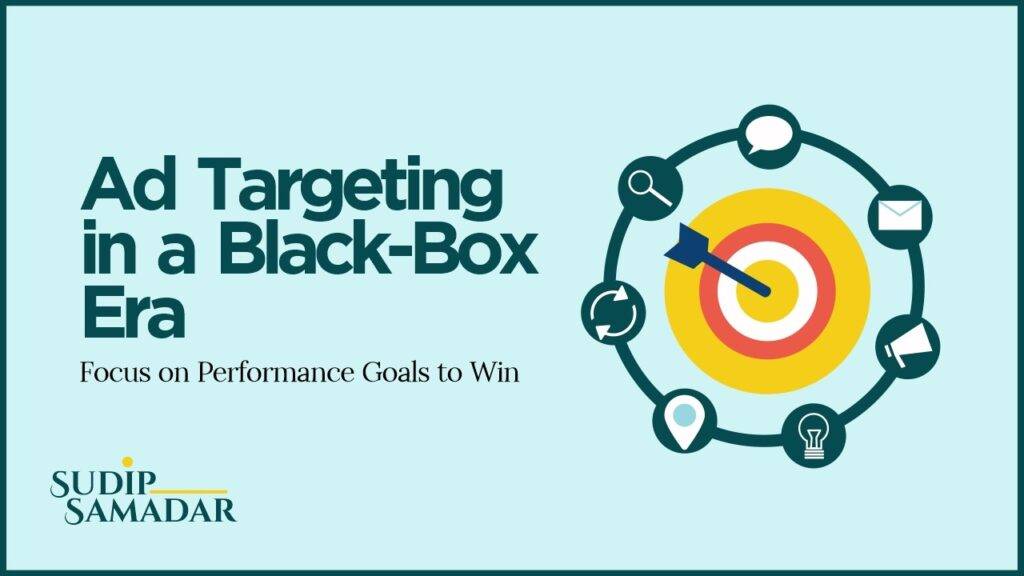
In today’s digital advertising landscape, platforms like Facebook and Google are moving toward a black-box model. This means less transparency for advertisers and fewer levers of control over targeting. So, what can we do to succeed in this evolving environment?
The answer lies in focusing on what remains in our control: ad copy, creative quality, attribution, offer optimization, performance goals, and bidding strategies. Of these, performance goals are where I see the most potential to innovate and improve results.
The Decline of Targeting Control
Previously, advertisers had significant control over audience targeting, but that’s changing. Platforms are removing transparency and shifting toward algorithm-based decisions. This leaves us with fewer ways to manually influence ad delivery.
While targeting is no longer as precise, we can still optimize other variables:
- Ad copy and creative to capture attention.
- Attribution models to accurately measure performance.
- Performance goals to direct algorithms toward high-quality traffic.
Of these factors, I believe performance goals hold immense power to improve campaign quality.
Why Performance Goals Matter More Than Ever
Facebook allows you to select different performance goals based on your campaign objectives:
- Link clicks
- Landing page views
- Engagement metrics
But here’s where it gets interesting: you can go beyond the basic goals. For instance, you can create custom performance goals that tell Facebook’s Pixel to find users who:
- Click more than 8 or 10 times on your website.
- Engage in deeper, high-quality interactions.
This type of goal focuses on quality traffic, not just cheap clicks.
The Challenges and Benefits of Custom Performance Goals
While custom event goals offer incredible value, they come with some challenges:
- Algorithm Learning Period: Facebook might initially struggle to meet these advanced goals.
- Time Investment: Running the campaign for a longer duration helps the algorithm adapt and optimize better.
From my experience, when campaigns are given enough time, the algorithm works harder to deliver the desired results. It explores more data, plays with metrics, and ultimately identifies the best audience to meet your specific goal.
How to Monitor Performance Goals Effectively
To ensure your custom performance goals are delivering quality traffic, you need the right monitoring tools. Here’s a simple, effective approach:
- Install Microsoft Clarity:
- Use URL parameters or tracking templates to send key data (like campaign name and ad set name) to Clarity.
- Analyze Visitor Flow:
- Filter visitors in Clarity by campaign name and analyze the website journey to verify audience quality.
- Match Reports:
- Compare Clarity’s insights with Facebook Ads Manager reports to ensure alignment.
This combination helps you validate whether your performance goals are truly bringing in high-quality traffic.
Make the Algorithm Work Harder with Custom Events
Machines thrive on factual, precise data. By defining custom performance goals, you force the Facebook algorithm to work harder to meet your specific requirements.
For example:
- If you combine custom events with a 1-day attribution window (instead of the default 7 days), the Pixel focuses even more on finding the right audience quickly.
- This extra focus ensures the algorithm digs deeper into its metrics to deliver better results.
How to Implement Custom Events
Setting up custom performance goals requires capturing user behavior and sending it to Facebook. Here’s how you can do it:
- Use Google Tag Manager (GTM) to:
- Identify and capture specific analytics events (e.g., multiple clicks or page visits).
- Send these events as custom events to Facebook Pixel.
By leveraging GTM, you can track meaningful interactions and use them as performance goals to optimize your campaigns.
Final Thoughts: Experiment, Monitor, and Adapt
As advertising platforms become less transparent, focusing on performance goals allows you to regain control and drive better outcomes. Custom performance goals—combined with tools like Microsoft Clarity and Google Tag Manager—enable you to:
- Direct Facebook’s AI toward high-quality traffic.
- Monitor audience behavior and validate performance.
- Make the algorithm work smarter and harder for your campaigns.
This strategy may require experimentation, but the results are worth it. In the age of AI-driven advertising, adapting to these tools and techniques is no longer optional—it’s essential.
By structuring your campaigns around innovative performance goals, you’re setting yourself up for success in a world where targeting is no longer king. Experiment with this approach, and let the results speak for themselves.
This version presents your ideas in a structured and engaging format, highlighting the key takeaways while maintaining a professional flow.
